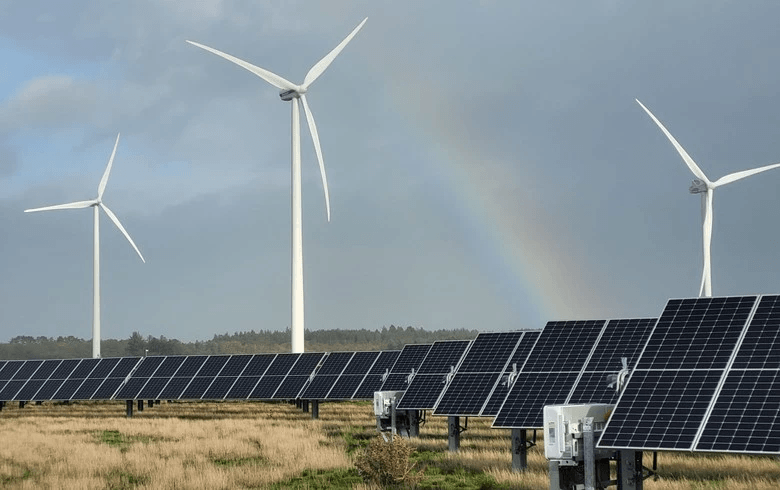Dams could help Africa go green, but many no longer make economic sense.
One of the big challenges we face regarding climate change is that we have to lower our emissions at a time when energy consumption is likely to grow. Many countries in the Global South will seek some combination of expanding access to the electric grid, increasing grid reliability, and expanding grid capacity to meet rising demand. Demand in Africa is estimated to increase by roughly 5 percent a year for some time. Handling that increase while reducing emissions will be a challenge.
As things currently stand, African nations are primarily served by a mix of large hydroelectric plants—several smaller nations already have nearly emissions-free grids—and fossil fuels. Most plans for limiting carbon emissions going forward have involved expanding hydropower, and there are plans for adding about 100 gigawatts of new capacity in the coming decades. But the rapid drop in the cost of wind and solar power raises questions about whether those plans still make sense.
In many cases, the answer is no, according to a new study. Instead, it suggests that only about half of the hydropower projects make economic sense and that many African countries are better off moving ahead with other renewables. By 2050, it’s estimated that half of Africa’s electricity could come from wind and solar.
Bad economics
Like most projections of this sort, the new work is built on a large collection of other models. These include one for projected energy demands and another that tracked the continent’s hydropower resources and planned hydroelectric projects. The future was represented in a number of scenarios, including one with business-as-usual carbon emissions and a second where emissions are kept compatible with 2° C of warming.
To account for the fact that climate change could alter future rainfall in Africa, the projections were run under two different levels of production from the dams: one based on normal production and one based on a “dry scenario” with very low rainfall.
The model then tracked the growth of the African grid to meet demand through 2050, with the cost of each hydroelectric plant compared to alternatives.
The results indicate that, even under the most favorable circumstances, as many as one-third of the planned hydropower facilities will be uneconomical when construction is slated to start. Under less favorable circumstances, around 40 percent of the planned facilities could be economical.
All of that is assuming everything goes well. As the researchers recognize, large projects like hydropower facilities are prone to delays and cost overruns, putting them at a larger disadvantage than wind and solar projects. Half of the projects that make sense to build will be finished within the next decade (indicating that many of them have already been started). Most of the rest are on one of a handful of large river basins: the Nile, Congo, Zambezi, and Niger.
A very different Africa
As always, however, things are a bit more complicated than simple economics might dictate. For example, building capacity purely based on expected output will leave some locations at risk of shortfalls in generation during any extended dry periods. Hydroelectric generation also pairs well with renewables since it can be easily ramped up or down whenever wind and solar aren’t generating due to weather conditions. So, there may be circumstances where it will still make sense to complete projects even if the cost is higher than the alternatives
There are also a few geographic complications. Zambia, for example, is the site of several potential dams on the Zambezi River basin but is also well connected to the Democratic Republic of the Congo, which is building a large dam on the Congo River. So some potential projects only make sense if demand rises faster than expected.
All of which suggests that the percentage of Africa’s electricity provided by hydropower will peak in the early 2030s and decline from there. “Our results show that hydropower will have lost its dominant role in Africa’s renewable electricity mix by 2050,” the authors conclude, declining to around 10 percent of the continent’s electricity production. It won’t be replaced by a single source, however. Instead, solar will account for 30–40 percent of generation, with wind providing another 10 percent or so.
Again, that’s purely due to economics. Even though hydropower is generally very cheap, the researchers write that “the window in which hydropower can still compete economically with solar photovoltaics is rapidly closing.”
Even without massive contributions from hydro, however, the scenarios still suggest that the continent’s reliance on fossil fuels can shrink dramatically. It’s currently estimated that sub-Saharan Africa gets about 70 percent of its electricity from fossil fuels, with about a third of that coming from the heavily polluting coal and diesel. Under the more optimistic scenarios, Africa can get over 60 percent of its power from renewables by 2050, despite rapid growth in demand.
Doing so, however, requires following through on commitments to limit climate change to 2° C. The drop in the cost of wind and solar will hopefully make meeting those commitments an easy choice.

